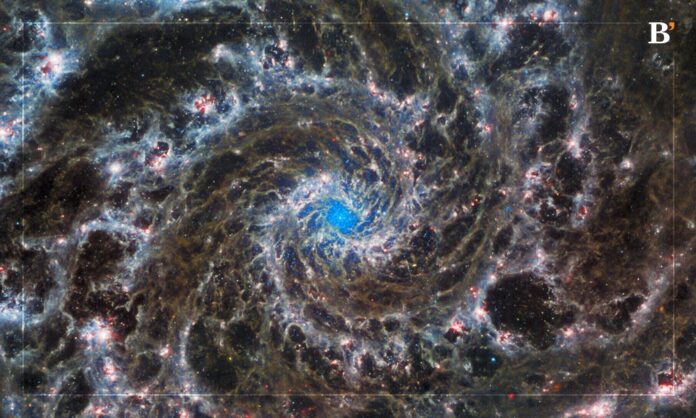Key Highlights
- Researchers have examined very compact structures of star clusters inside galaxies, so-called clumps, for the first time.
- Stockholm University researchers have studied the first phase of star formation in distant galaxies.
Researchers from Stockholm University have made a groundbreaking discovery. Images were captured by the James Webb Space Telescope of galaxy clusters. For the first time, they have examined the compact structures of star clusters within galaxies, also known as clumps. The findings have been published in the Monthly Notices of the Royal Astronomical Society.
Magnifying Effect
Adélaïde Claeyssens, one of the lead authors of the study, explained that the massive galaxy clusters they examined have the ability to bend light rays passing through their center, just as predicted by Einstein’s theory of General Relativity in 1915. This results in a magnifying effect, allowing the researchers to magnify the images of background galaxies.
The magnifying effect combined with the high resolution of the James Webb Space Telescope made it possible for researchers to detect these compact structures and study the link between clump formation and evolution and galaxy growth a few million years after the Big Bang. This level of detail has not been achievable until now.
Angela Adamo, another lead author of the study, stated that the images captured by the James Webb Space Telescope have revolutionized the field of research and will help scientists better understand how galaxies form and evolve.
The ability of the James Webb Space Telescope to detect small structures within distant galaxies and see clumps in many of these galaxies is truly a game-changer for the field of astronomy.
Also Read: Top 14 Ecommerce Trends Of USA In 2022
The oldest galaxy studied in the paper is so far away that the researchers could see what it looked like 13 billion years ago, when the Universe was only 680 million years old.




